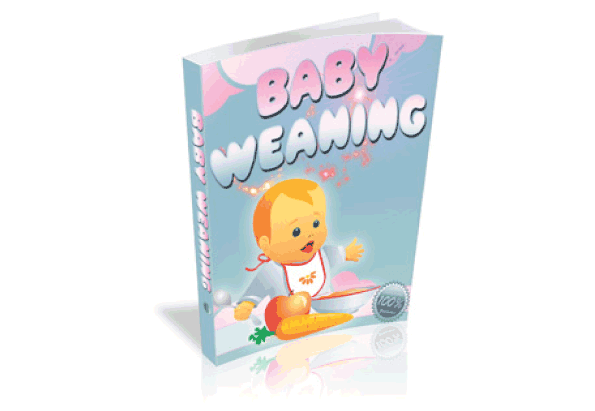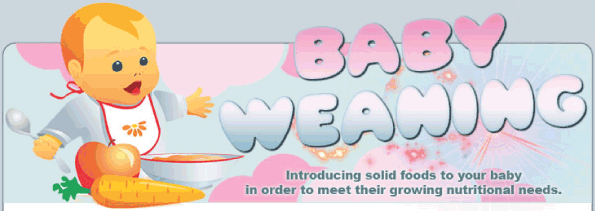Table of contents
Navigating the journey of baby weaning can feel overwhelming, but this comprehensive e-book, “Baby Weaning,” provides parents with the knowledge and confidence to make this transition a positive experience for both themselves and their child. The author’s perspective is centered on a gradual, child-led approach, moving away from rigid timetables and external pressures. This guide offers a wealth of information, from debunking common myths to providing practical tips, all while emphasizing that the process of baby weaning is a unique and personal one for every family.
Baby Weaning: The Myth of the Six-Month Deadline
A significant portion of the book is dedicated to challenging the common misconception that babies must be weaned by six months of age. The author highlights that this is a widespread but unfounded belief in the United States, where only about 20% of babies are still nursing at six months. This is in stark contrast to many European, Asian, and African cultures, where breastfeeding continues until a child is between two and four years old. The e-book asserts there is no evidence that extended breastfeeding harms a child; in fact, there are numerous benefits, including providing essential nutrition and immunological advantages. The author strongly advocates for a natural weaning process where the child, not an arbitrary deadline, dictates the timeline.

The Emotional and Physical Benefits of Extended Breastfeeding
The e-book stresses the profound benefits of extended breastfeeding. From a nutritional standpoint, breast milk remains highly nutritious for a child’s first few years, helping to protect their immune system and supporting proper development. Beyond the physical health benefits, breastfeeding fosters an incredibly strong bond between mother and child, providing a sense of comfort and security that goes far beyond a simple food source.
The author points out that children who breastfeed for a longer period are often healthier and develop a stronger bond with their parents. Allowing for this natural progression also helps the mother’s body adjust more comfortably, avoiding the pain and potential complications, like engorgement or infection, that can accompany abrupt weaning. This approach makes baby weaning a collaborative and emotionally sound process for all involved.

Weaning Methods and Professional Guidance
When a parent and child are ready to begin the baby weaning process, the book outlines several gentle, gradual methods. These include skipping one feeding per week, shortening the duration of each feeding, and using distraction techniques for older children. The author’s perspective is that a slow and steady approach is key to avoiding emotional and physical distress for both mother and child.
The e-book also highlights the importance of seeking advice from trusted sources, particularly a pediatrician, who can provide factual, health-based guidance. While friends and family may offer advice, the book cautions against opinions that are not based on personal experience or professional knowledge. Support groups, both in-person and online, are also recommended as a valuable resource for unbiased opinions and shared experiences. This professional guidance ensures that every step of the baby weaning process is well-informed and tailored to the child’s specific needs.
Why Abrupt Weaning Is Not Recommended
The e-book strongly advises against abrupt weaning, detailing the potential harm it can cause to both the mother and the child. For mothers, suddenly stopping can lead to painful breast engorgement and even increase the risk of infection or abscesses.
For the child, abrupt weaning can be an emotional trauma. Breastfeeding is not just a source of nutrition; it is a source of security and comfort, and suddenly removing it can be deeply distressing for a child who doesn’t yet understand verbal communication. The author’s strong stance against abrupt weaning underscores the central theme of the book: the process should be a gentle transition, allowing the child to adjust emotionally and physically at their own pace. This gradual approach also helps a child to transfer their attachment from breastfeeding to other objects or habits, like cuddling or holding a blanket. The entire process of baby weaning should be a positive and empowering one.
Baby Care Guide: Essential Tips for Health, Sleep, and Safety
Addressing Night Weaning and External Pressures
The guide also dedicates specific sections to night weaning and managing external pressure from others. For night weaning, the author recommends ensuring the baby gets enough calories during the day and suggests delaying the night feeding time by soothing the baby for a few minutes before nursing. When it comes to dealing with family and friends who pressure a mother to wean, the book provides useful talking points, such as citing recommendations from the American Academy of Pediatrics and the World Health Organization, to back up the decision to continue breastfeeding.
This section empowers mothers to trust their instincts and to make decisions based on what is right for their child, not on societal expectations. The book’s comprehensive advice on baby weaning ensures parents feel supported and informed throughout their journey.